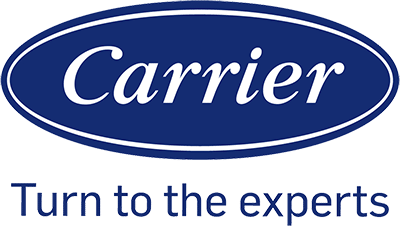Understanding HVAC Coil Cleaning
HVAC coil cleaning is essential for maintaining system efficiency and reducing energy consumption. Clean coils prevent damage and promote optimal performance. It’s important to remove dirt, grime, and debris from ac, condenser, and evaporator coils.
Significance of Clean Coils
Clean coils are crucial for an HVAC system’s efficiency. When coils are clean, air flows freely, and the system doesn’t have to work as hard. This reduces energy consumption and lowers utility bills. Clean coils also minimize wear and tear, prolonging the life of the HVAC system. Regular maintenance ensures that the system operates at its best, providing consistent comfort.
Common Contaminants Affecting Coils
Dirt: Accumulates over time and restricts airflow.
Grime: Sticky deposits that trap other particles.
Debris: Small objects that block the coils.
Dust: Fine particles that settle on the coils.
Pollen: Seasonal allergen that can clog coils.
Each of these contaminants can reduce HVAC efficiency. Regular cleaning helps to keep them at bay, ensuring optimal performance.
Effects of Neglect on HVAC Efficiency
Neglecting coil cleaning leads to several problems. Dirty coils force the HVAC system to work harder, increasing energy consumption and utility costs. Over time, the extra strain can cause parts to wear out faster, leading to more frequent repairs and costly downtime. Additionally, poor performance can result in inconsistent temperatures and reduced comfort levels inside the building. Regular maintenance helps to avoid these issues, keeping the system running smoothly.
Step-by-Step Coil Cleaning Processes

Regularly cleaning the evaporator and condenser coils enhances HVAC performance and efficiency. Specific tools and safety measures ensure a thorough and safe cleaning process.
Cleaning the Evaporator Coil
First, turn off the HVAC system to prevent electric shock. Wear safety goggles and gloves.
Remove the access panel to reach the evaporator coil. Use a soft-bristled brush to gently scrub away loose dirt and debris.
Mix a mild detergent or a coil cleaning solution with water. Apply the mixture with a spray bottle and let it sit for a few minutes.
Use a soft brush or a cloth to wipe the coil clean, being careful not to bend the fins.
Rinse with water and let it dry completely before replacing the access panel.
Cleaning the Condenser Coil
Turn off the power to the HVAC unit. Spray the outside of the condenser coil with water using a garden hose.
Apply a coil cleaner or a mix of mild detergent and water to the coil. Allow it to sit for 5-10 minutes.
Brush the coil gently with a soft-bristled brush to remove dirt and grime. Follow up by rinsing the coil thoroughly with water.
Make sure the coil is completely dry before turning the system back on. Regularly check for bent fins and straighten them with a fin comb if needed.
Routine Maintenance Tips
Schedule routine checks every three months. Regular inspections help identify dirt buildup early.
Replace the HVAC air filters every 1-3 months to prevent dirt from reaching the coils.
Utilize coil cleaning solutions specifically designed for HVAC systems. Always wear protective gear like safety goggles and gloves during cleaning.
Keep the area around the condenser clear of debris, plants, and leaves to ensure optimal airflow. Regular maintenance can help prevent major issues and prolong the lifespan of the system.
Preventive Measures and Professional Maintenance
Proper preventive measures and timely professional maintenance help keep HVAC systems efficient and reduce energy costs. Dirty coils lead to increased energy consumption, but regular checks and cleaning optimize long-term performance.
Optimizing Long-Term HVAC Performance
To ensure optimal performance and extend the longevity of HVAC systems, regular checks are required. Dirty coils can significantly reduce the system’s cooling capacity and increase wear and tear. Over time, this leads to higher energy bills and reduced indoor air quality.
To avoid these issues, the cooling process must stay efficient. Preventive maintenance includes cleaning coils, changing filters, and inspecting components. These tasks reduce the need for costly repairs by addressing potential problems early.
Maintaining a clean system also helps in maintaining better air quality. Frequent inspections and maintenance sessions are essential. By keeping up with regular cleaning, the risks of system inefficiency and high energy costs are minimized.
When to Seek Professional HVAC Services
There are times when professional HVAC services are necessary. Calling a professional HVAC technician is recommended when there’s noticeable wear and tear or ongoing issues. Ignoring these signs can lead to more severe problems and may shorten the system’s lifespan.
Professional maintenance includes inspections that non-professionals might miss. Technicians assess the system’s overall condition, identify dirty coils, check cooling capacity, and ensure all parts function well. This thorough approach prevents increased energy consumption and further damage.
It’s also important to schedule professional checks at least once or twice a year. The surrounding environment, including environmental factors like dust and pollen levels, impacts cleaning frequency. Technicians provide essential insights to address any specific concerns, thereby maintaining system efficiency.




